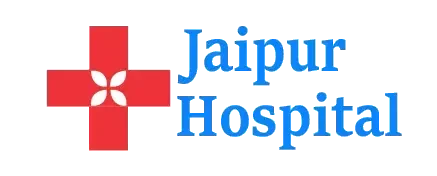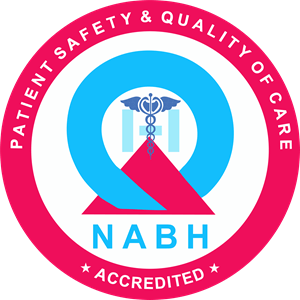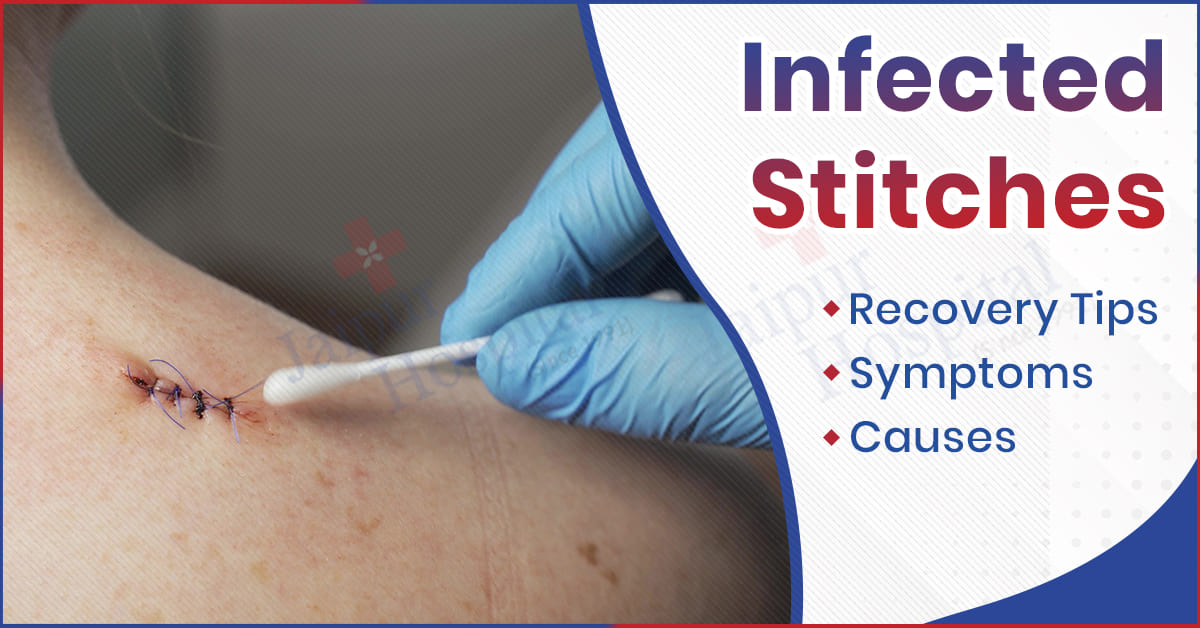A lot of stitches tend to get infected when germs get into a wound either during or after the stitching process. With such infections, recovery gets delayed and pain develops. Knowledge of how infections occur and the early signs of the infection will aid one in taking fast remedial steps.
In this discussion, we will lay out the causes for stitch infections and look into the common symptoms of stitch infections. We then provide treatments for infected stitches and discuss the best preventive measures and practices for healing wounds from infected stitches to ensure a safe and speedy recovery.
What Are Infected Stitches?
An infected stitch is formed by the entry of harmful bacteria into a stitched wound site, triggering inflammation and redness, pain, or pus discharge from the wound. Generally, stitches are meant to close wounds to allow healing; however, an infection will interfere with this healing process and could cause complications if not cared for in time. Early recognition of the signs of infection prompts appropriate care (including treatment of infected stitches) to be started, and measures for healing an infected wound are taken.
What are the Causes of Infected Stitches?
Stitches become infected when germs invade a wound, multiply, and hinder healing. When one understands what causes an infection in stitches, it is easier to prevent and treat it promptly. These reasons include:
- Insufficient Hygiene: If the wound and area around it are not clean, bacteria will almost certainly multiply and infect the stitches.
- Using Nonsterile Surgical Instruments: Stitching and operating with nonsterile or poorly sterile instruments will allow bacteria to be absorbed into the incision immediately.
- Handling a Wound with Dirty Hands: Any germs and bacteria from one’ own dirty hands may be transferred during handeling the stitches or the wound,
- Existing Health Issues: Existing health issues such as diabetes, immunocompromised or poor blood flow leave the individual at increased risk of infection or rupture of stitches.
- Not Following Wound Care Instructions: Not following procedures for aftercare, cleaning, and dressing of the wound, will definitely increase chances of infection.
- Infiltration of Foreign Particles into the Wound: Dirt, sweat, or any external contaminant entering the stitched area can cause infection and delay healing of an infected wound.
You Can Read Also: स्कैल्प सोरायसिस क्या है: लक्षण, कारण और इलाज
What are the Symptoms of infected stitches?
Early symptom recognition of stitch infections is essential for acquiring the proper treatment for infected stitches to enable smooth healing of the infected wound. Some common symptoms include:
- Redness and Swelling: The stitched area turns red, warm, and swollen, indicating infection.
- Persistent Pain: The pain around the stitches worsens and becomes more uncomfortable with time, instead of getting better.
- Pus or Discharge: If the wound is draining yellow, green, or foul-smelling drainage, this is an obvious sign of infected stitches.
- Fever or Chills: Getting a fever may be a sign the infection has spread beyond the wound.
- Delayed healing: An infection may be suspected when the stitches are not closing and the wound appears to be worsening.
- Increasing tenderness: The area around the stitches may become progressively tender or painful to touch or around the postoperative area.
What precautions are to be taken for an infected stitch?
By taking the right measures, one can lessen the risk of infection and promote faster healing of an infected wound. The following should be abided by concerning infected stitches so as to procure best recovery:
- Wound Hygiene: Cleanse the stitched site with some mild antiseptic solution, or as advised by your doctor.
- Dressing application and change: The stitches should remain covered with sterile dressings that are changed regularly to prevent contamination.
- Don’t touch your wound with dirty hands: Wash your hands with soap and warm water before touching or caring for your stitched-wound to prevent dangerous germs from entering the wound.
- Take Medications as Directed: Take antibiotics or painkillers as directed by your doctor to prevent your infection from worsening and to facilitate faster wound healing.
- Do not overextend yourself: Stretching, pulling or putting weight on that area could rupture the wound again, which would increase the chance of infection.
- Practice Hygiene: For quicker wound healing, the wound site should remain clean. Avoid dirt and sweat around the wound.
- Follow up with your doctor: Follow-up appointments with your doctor help to identify early signs of infections and continue to treat or modify treatment appropriately.
You Can Read Also: Rotablation Angioplasty: Purpose, Benefits, Procedure, and Recovery
What are the Treatment options for infected stitches?
If infected stitches are properly managed, more serious infections can be prevented and the infected wound can be healed safely. Treatment may involve: depending on the degree of infection
- Antibiotics: Some infections can easily be treated by the doctor giving antibiotics orally or applying them on the skin to kill the bacteria and reduce the infection.
- Wound Cleaning and Dressing: Regular care involves cleaning the wound with an antiseptic solution and replacing the dressing with fresh sterile dressings to control infection and heal the injury faster.
- Drainage of Pus: In cases where pus is formed around the stitches, drainage will be made to reduce the swelling and promote recovery.
- Stitch Removal: In cases if the infection is really bad, the stitches may need to be removed to allow the wound to heal under new medical care.
- Pain Management: The doctor may prescribe analgesics or anti-inflammatory medication to reduce pain and swelling.
- Warm Compress: It works in greater promotions of blood circulation around the injured area, pain relief, or healing.
- Conventional Medical Management:A cautious “watchful wait” can help in the diagnosis of complications and allow proper healing of the infection.
When do I go to the doctor?
Infections that cannot be treated immediately will require the intervention of a physician. This refraining from treatment of infected stitches will help them to seek medical care sooner with severe consequences. Less likely other instances include:
- High fever or chills: An elevation in one’s temperature may indicate an infection that has entered the bloodstream and the body is fighting this infection.
- Increasing Redness and Swelling: In cases where the stitch area becomes red, warm, and swollen, the condition should weigh on the minds of medical professionals and be treated accordingly.
- Persisting or Increasing Pain: Pain that worsens instead of improving is a warning sign for a serious infection.
- Continual Discharge of Pus or an Unpleasant Smell: Discharge appearing thick with yellow or greenish hues indicates that the infection is not healing spontaneously.
- Delayed Healing Infected Wound: If, after a few days, the wound fails to show any improvement or becomes worse, it is time to seek professional intervention.
- Stitch Opening or Breakdown: If there is a possibility that the stitches have started to loosen or the edges of the wound begin to separate, then a doctor must be consulted without delay.
Conclusion
In conclusion, one should note that an infected stitch unwittingly delays recovery and, when neglected, may aggravate into many complications. One must, therefore, discern the cause of an infected stitch, recognize early symptoms of an infected suture, maintain proper prevention of infected stitches, and seek infected stitches treatment for proper wound healing.
Usually, this condition is handled by the department of General Surgery and Wound Care, where experts provide medical care and guidance. Jaipur Hospital is well-renowned for offering advanced treatments and expert care for wound infections along with support for comprehensive recovery.


